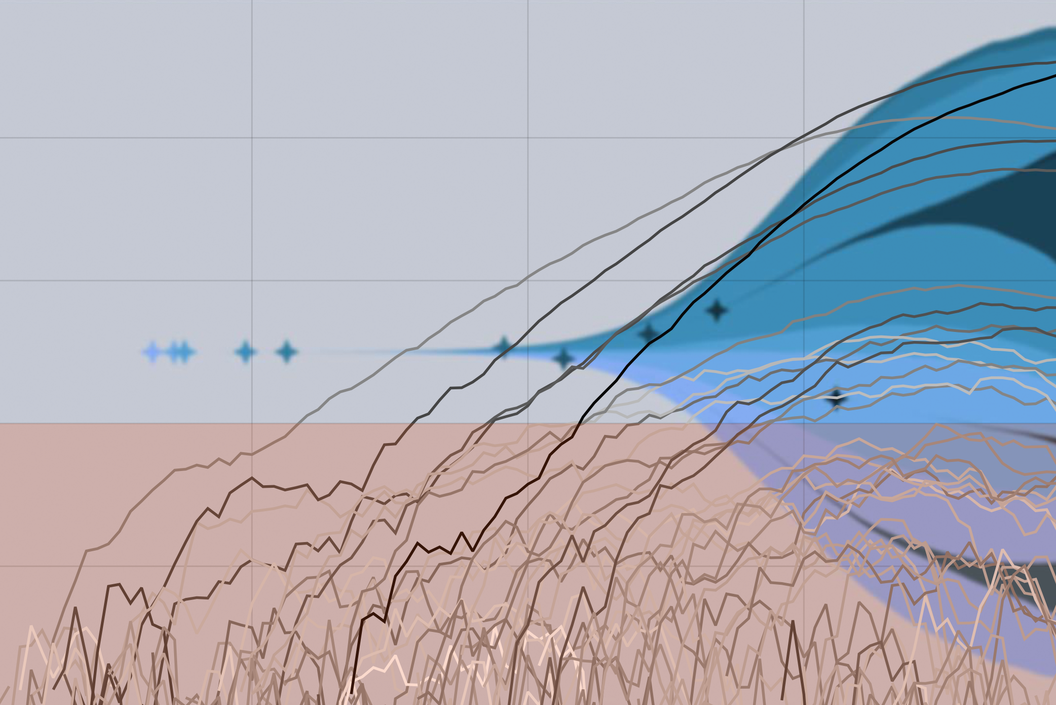Click the image below to view the full size version of this
cover.

Created by: Nathaniel V. Mon Père
Issue 306: Genetic heterogeneity – emerging from mutational processes and expanding clones – pervades somatic tissues at all stages of human life. This phenomenon has been well-documented in blood, where extensively shared mutations are common late in life. A newly occurring mutation must grant its carriers a significant fitness advantage over other cells for it to escape extinction from stochastic fluctuations and reach detectable size within a human lifetime. While such events are rare, they remain common enough that by the end of middle age some handful of highly fit clones compete for dominance, altering the fitness landscape in which they coexist and slowing each other down in the process. The image background portrays the expansion of various detectable clones in time (from left to right) as distinctly colored bands whose width represents clone size. In the foreground clonal expansions are depicted as logarithmic curves. The shaded area displays the “sub-detection” regime in which clones are still virtually invisible to sampling and run the risk of stochastic extinction. Read the related post on The Mathematical Oncology Blog, here.
